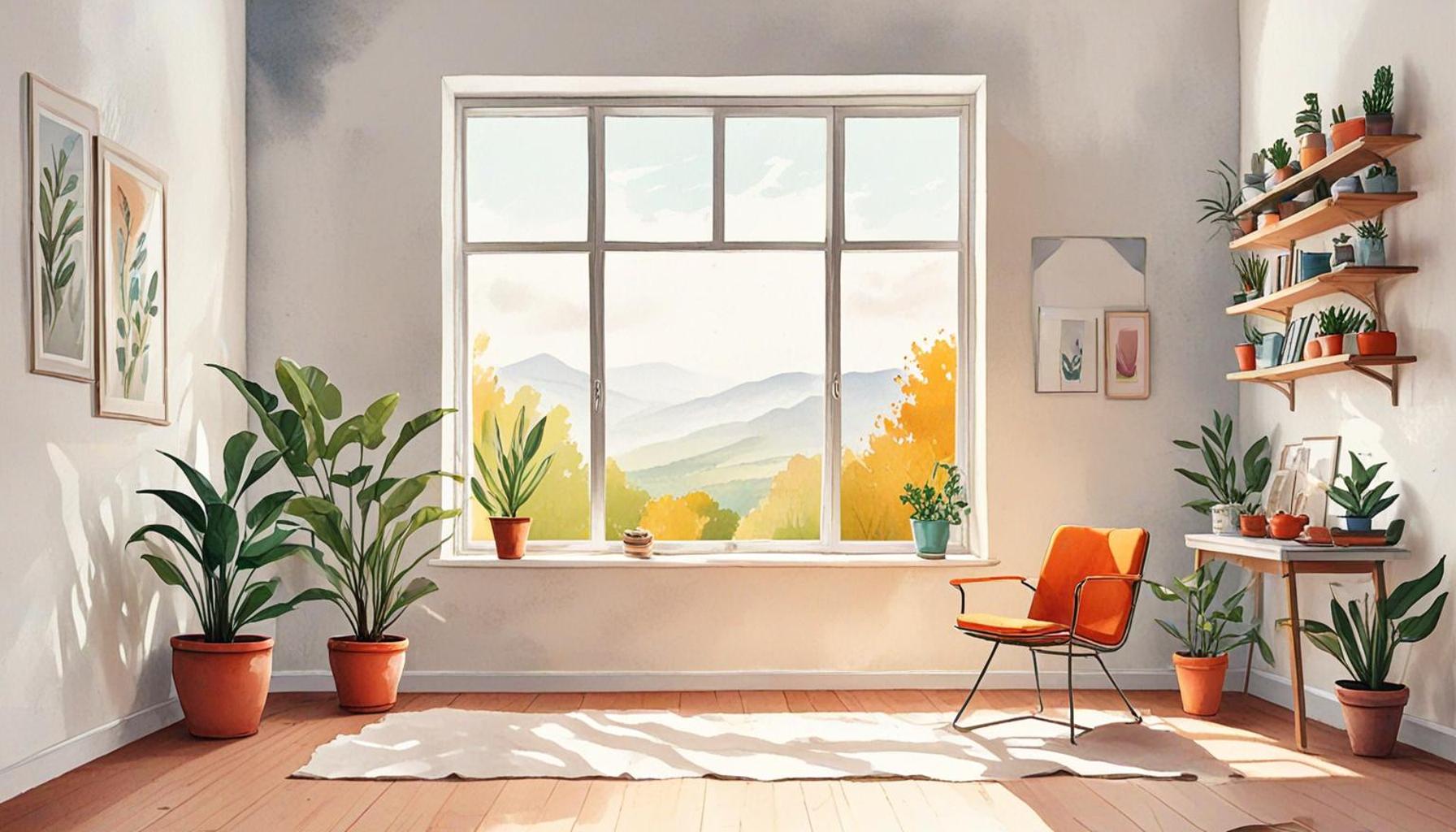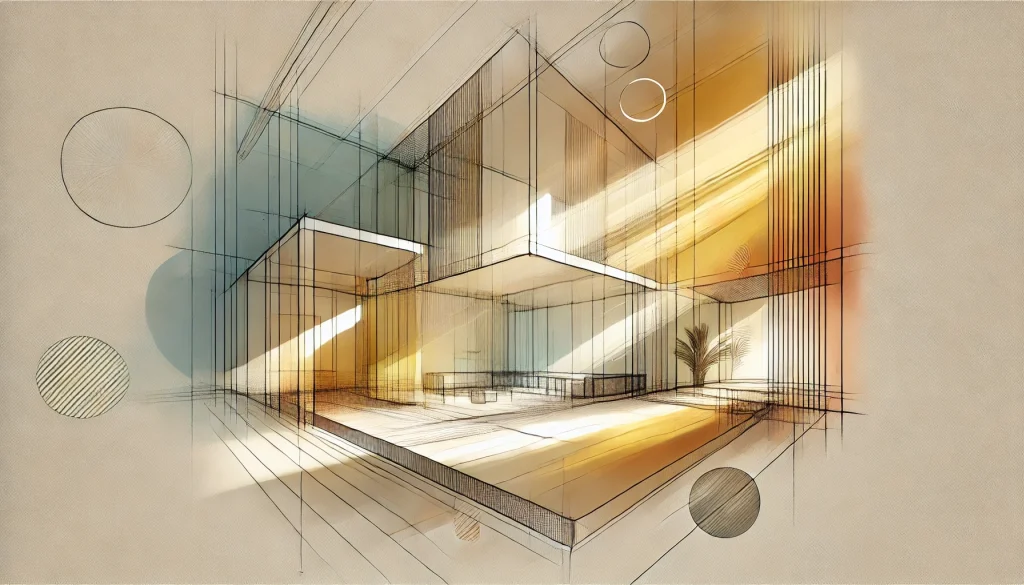The Importance of Natural Light in Minimalist Spaces

The Transformative Role of Natural Light in Minimalist Design
Natural light has the remarkable ability to shape and define our living spaces. Within the context of minimalist design, where the ethos is to embrace simplicity and functionality, the infusion of daylight not only enhances the aesthetic appeal but also profoundly influences the mood and productivity of occupants. It serves not merely as a design element but as a vital component of living well.
Consider the benefits of incorporating natural light into interior spaces:
- Enhances Aesthetics: The presence of sunlight floods spaces with warmth and can create a sense of depth and texture that artificial lighting often fails to achieve. For instance, a well-placed window can frame a picturesque view, turning an ordinary wall into an ever-changing canvas filled with light and color.
- Reduces Energy Costs: In a society increasingly aware of energy consumption, employing daylight can significantly diminish reliance on artificial lighting during the day. This is particularly crucial in urban settings, where energy costs can add up. For example, studies indicate that buildings with ample natural light can see reductions of up to 30% in energy expenditures.
- Boosts Mood: Numerous studies have shown that adequate exposure to sunlight can improve mood and overall mental health. In regions like the Pacific Northwest, where overcast skies dominate much of the year, the prevalence of seasonal affective disorder (SAD) is higher, highlighting the importance of maximizing daylight in design. Simple design choices, like large windows or light tubes, can create uplifting environments that combat these issues.
In the United States, particularly in urban areas known for their minimalist architectural trends, understanding the interplay between natural light and space is crucial. Homes and offices that thoughtfully incorporate features such as large glass doors, clerestory windows, and skylights can transform even the most modest of settings into vibrant spaces that breathe life and energy.
Examining the importance of natural light in minimalist designs reveals paths to maximizing space efficiency while creating a soothing atmosphere. Large, open-plan rooms flooded with sunlight can foster social interactions, while smaller, more private areas can benefit from streamlined windows that allow natural views without compromising on intimacy. This balance is a hallmark of minimalism.
Are you prepared to explore the profound effects of sunlight on design? Delving deeper into how natural light influences not just aesthetics but also functionality could provide valuable insights for anyone looking to cultivate a harmonious living environment. There are numerous resources available, from architectural studies to design blogs, that can further illuminate the transformative role of natural light in our everyday lives.

DIVE DEEPER: Click here to discover more
Maximizing Space Efficiency through Natural Illumination
The careful integration of natural light in minimalist spaces not only beautifies a room but also enhances its functionality. In minimalist design, the philosophy focuses on decluttering and creating a sense of spaciousness. When paired with natural light, this approach can magnify the perceived size and openness of a room, making even smaller areas feel more inviting and less confined.
Architectural elements that allow for greater natural daylight, such as large windows, glass doors, and skylights, play a pivotal role in achieving this effect. For example, in urban environments characterized by high-density buildings, maximizing views and light penetration can transform a seemingly cramped apartment into a refuge of openness. Architects and designers often leverage these features to blur the lines between indoor and outdoor spaces, creating an illusion of continuity and flow.
- Vertical Windows: Often employed in modern minimalist designs, vertical windows draw the eye upward, emphasizing ceiling height and creating a sense of grandeur in a living space.
- Open Layouts: Open floor plans allow sunlight to spill freely throughout a home, reducing the need for artificial lighting and creating a harmonious balance within various living areas.
- Translucent Materials: Using materials such as frosted glass or polycarbonate can allow light to traverse between rooms, promoting both privacy and illumination—key tenets of minimalist philosophy.
Moreover, natural light positively impacts the efficiency of space by influencing how furniture is arranged and utilized. Thoughtful positioning of furniture can facilitate light flow, fostering a comfortable environment ideal for social engagement or solitary reflection. Many minimalist spaces prioritize multifunctional furniture, allowing inhabitants to maximize usability while keeping their surroundings clutter-free.
The psychological benefits of natural light also cannot be underestimated. Natural daylight positively affects our circadian rhythms, playing a crucial role in regulating sleep patterns and overall well-being. Environments enriched with sunlight can lead to heightened alertness and improved cognitive function, both of which are invaluable in today’s fast-paced world. In workplaces adhering to minimalist design principles, this benchmark can lead to increased productivity, enhanced creativity, and even better employee satisfaction.
As we explore further the significance of natural light in minimalist spaces, one must delve into its utilization not just as an aesthetic tool but as a vital design strategy that affects every scale of living—from residential homes to commercial environments. Understanding this relationship can empower individuals to create spaces that truly reflect their identities and enhance their quality of life.
| Advantage | Description |
|---|---|
| Enhanced Mood | Natural light has been shown to elevate mood and promote a sense of well-being, making minimalistic environments more inviting. |
| Energy Efficiency | Utilizing daylight reduces reliance on artificial lighting, leading to lower energy consumption and costs over time. |
| Spatial Perception | Natural light can make spaces appear larger and more open, a key principle in minimalist design that emphasizes simplicity and function. |
| Health Benefits | Exposure to natural light supports better sleep patterns and overall health, contributing to a harmonious living space. |
Incorporating natural light into minimalist designs not only complements the aesthetic but also introduces numerous benefits that enhance the quality of life. The interplay of sunlight and open spaces fosters a serene environment conducive to clear thinking and relaxation. Furthermore, the strategic use of windows and skylights allows light to flood spaces, minimizing the need for excess decoration and thus adhering to the minimalist philosophy of simplicity. Moreover, a well-lit minimalist space can improve productivity and creativity, particularly in home offices or studios. By aligning the layout of furniture with the flow of light, residents can amplify their connection to the environment while maintaining a clutter-free atmosphere. This relationship between light and space forms the cornerstone of effective minimalist design. The consideration of natural light is paramount in creating not just visually appealing spaces, but also functional and health-promoting environments.
DISCOVER MORE: Click here to learn how intentional design can enhance your life
The Health Benefits of Embracing Sunlight
In addition to aesthetic and spatial advantages, the presence of natural light in minimalist spaces carries significant health benefits that enhance the overall quality of life. One of the most compelling reasons for integrating daylight into design is its profound impact on mental and physical well-being. Exposure to sunlight has been shown to increase levels of serotonin, the hormone responsible for regulating mood, which can combat feelings of depression and enhance emotional stability.
Moreover, the need for adequate vitamin D often leads individuals to seek out natural light. This essential nutrient is crucial for maintaining bone health and supporting the immune system. With many urban dwellers spending the majority of their time indoors, minimalistic spaces that maximize sunlight exposure can encourage individuals to bask a little longer in the daylight, ultimately contributing to their health.
- Boosts Mood: Multiple studies have demonstrated that environments with abundant natural light can elevate mood levels. Sunshine is linked to the release of endorphins, resulting in heightened feelings of happiness and well-being.
- Enhances Focus: Natural lighting has been found to improve concentration and reduces eye strain, making it vital for spaces like home offices or study areas designed within a minimalist framework.
- Regulates Sleep Patterns: Access to natural light during the day helps maintain a healthy sleep-wake cycle, enhancing the quality of sleep during the night, which is critical for overall health and productivity.
The orientation of a minimalist space is another critical factor when considering natural light. For instance, south-facing rooms typically receive more direct sunlight throughout the day compared to those facing north. This principle can guide homeowners in deciding how to design their spaces for optimal light exposure. Additionally, landscape elements such as trees and neighboring buildings often influence how much light enters a home, making early planning essential for those committed to minimalist aesthetics.
Furthermore, recent trends in residential design emphasize the importance of sustainable living, aligning closely with the minimalist philosophy. By incorporating large windows or apertures that harness solar energy, homes become more energy-efficient by reducing reliance on artificial lighting during daylight hours. This not only lowers utility bills but also contributes to an eco-friendly lifestyle, which is increasingly relevant in today’s climate-conscious society.
In commercial minimalist settings, the advantages of natural light extend to employee productivity and satisfaction. A study by the Harvard T.H. Chan School of Public Health highlighted that workers in environments flooded with natural sunlight exhibited improved focus and overall job performance. Businesses are increasingly recognizing that optimizing the natural light in their offices can lead to a significant enhancement in workforce engagement and retention.
As we continue to examine the numerous facets of natural light in minimalist spaces, it becomes clear that this element serves far beyond mere illumination; it enriches the lives of individuals by enhancing health, mood, and functionality. By prioritizing natural light in design strategies, both residential and commercial spaces can foster environments that allow occupants to thrive.
EXPLORE MORE: Click here to discover how to create efficient spaces at home
Final Thoughts on the Role of Natural Light in Minimalist Design
In summary, the significance of natural light in minimalist spaces transcends aesthetic appeal, creating a harmonious blend of health benefits and enhanced functionality. As demonstrated, the ability of sunlight to elevate mood, boost cognitive performance, and regulate vital biological processes underscores its indispensable role in our living and working environments. Choosing to incorporate ample natural illumination not only cultivates a visually pleasing atmosphere but also contributes to overall well-being.
As we navigate a fast-paced, technology-driven world, the striking transformation achieved through intentional design that prioritizes sunlight becomes all the more relevant. Sustainable practices, such as strategic window placement and eco-friendly materials, reinforce the minimalist ethos while promoting energy efficiency. Investments in natural light can reduce reliance on artificial sources, leading to cost savings and a smaller environmental footprint.
As architects and homeowners alike embrace the minimalist philosophy, they are urged to reconsider the potential of their spaces. Each room offers an opportunity to harness the beauty and advantages of daylight, illustrating that simplicity can greatly enhance the human experience. Future trends in both residential and commercial design are likely to reflect this understanding, as more individuals recognize that the benefits of natural light create a ripple effect of positivity, enhancing not only occupant health but also productivity and creativity.
Ultimately, the thoughtful integration of natural light into minimalist designs serves as a powerful reminder of the connection between our built environments and our well-being, encouraging us all to live brighter, healthier lives.


